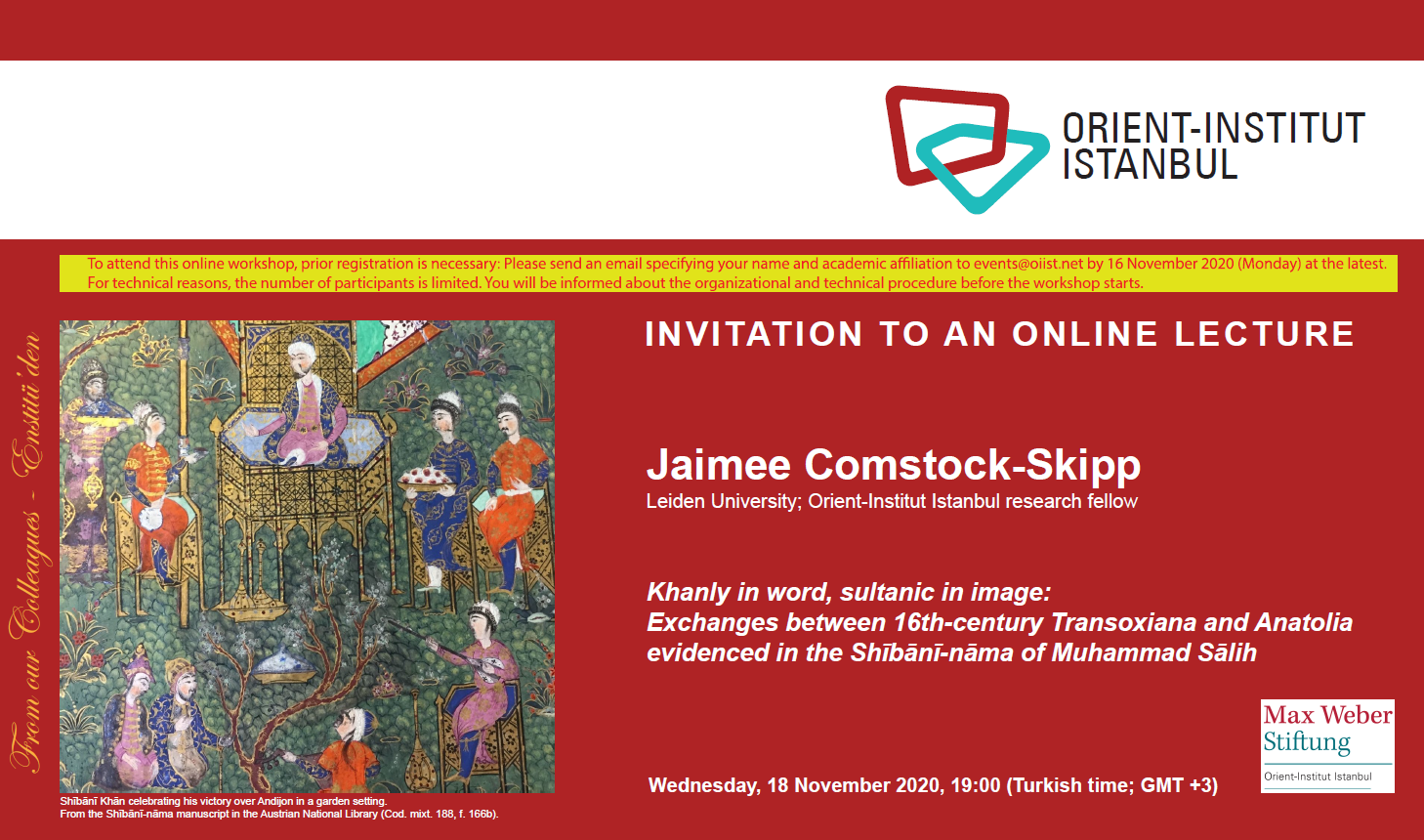November, 2020
Details
IMPORTANT NOTICE: To attend this online lecture, prior registration is necessary: Please send an email specifying your name and academic affiliation to events@oiist.net by 16
Details
IMPORTANT NOTICE: To attend this online lecture, prior registration is necessary: Please send an email specifying your name and academic affiliation to events@oiist.net by 16 November 2020 (Monday) at the latest.
For technical reasons, the number of participants is limited. You will be informed about the organizational and technical procedure before the lecture starts.
Khanly in word, sultanic in image: exchanges between 16th-century Transoxiana and Anatolia evidenced in the Shībānī-nāma of Muhammad Sālih
The focus of the lecture is on a singular copy of the Shībānī-nāma manuscript located in Vienna. It was composed in Turkish by the poet Muhammad Sālih when he served the Abū’l-Khairid Shībānids (Uzbeks) after the troops of Muhammad Shībānī Khan took over Transoxiana (Central Asia) in 1500. Completed in autumn 1510, the manuscript’s text praises Shībānī as a dynastic founder and extols his victories and conquests. But the leader was killed a few months later and the work remained unfinished. At a later point it left the region, with its transit evidenced by completed illustrations. Accepted to be products of the Ottoman sphere based on parallels to other illustrated historical works from the Istanbul workshops, their provenance provide insight into political and artistic exchanges between Ottomans and Uzbeks that are not fully known but which can be gleaned from the materiality of this very manuscript. It seems plausible that they were added during the reign of Suleiman the Magnificent based on his correspondence and rapport with contemporary Abū’l-Khairid rulers in Bukhara and Samarqand, but the intended recipient and rationale for the finished product remain elusive.
Jaimee Comstock-Skipp holds a BA from the University of California, Berkeley in Near Eastern Studies with a speciality in Arabic and Islamic civilizations (2009). She also holds an MA from the Williams College Graduate Program in the History of Art (2012) and a second MA from The Courtauld Institute of Art in London (2015), where she studied book arts of the Mongol through Safavid periods.
She is currently a PhD candidate affiliated with Leiden University working on a dissertation related to Abū’l-Khairid productions of Firdausī’s Shāhnāma and related epics from 16th to 17th-century Central Asia. She has received numerous research awards to fund her studies, and has several forthcoming publications on illustrated manuscripts from Central Asia and depictions of Central Asians by Safavid artists in the early modern period.
Zeit
(Mittwoch) 19:00

